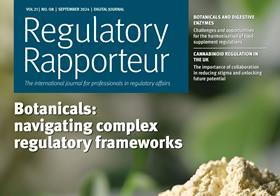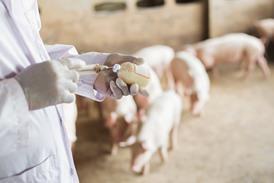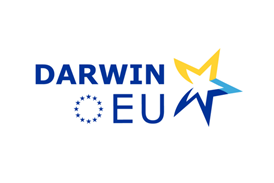
Regulatory Rapporteur
September 2024 | Volume 21 | No.8
Licence notice
Copyright © 2015-2024 The Organisation for Professionals in Regulatory Affairs Ltd. T/A Regulatory Rapporteur − All Rights Reserved. This work is licensed to Nikolaas Tilkin-Franssens at ADM for personal and academic use only.
Notwithstanding this licence, no part of materials published in Regulatory Rapporteur may be reproduced without the express written permission of the publisher.
As a general rule, permission should be sought from the rights holder to reproduce any substantial part of a copyrighted work. This includes any text, illustrations, charts, tables, photographs, or other material from previously published sources.
To obtain permission(s) to re-use content published in Regulatory Rapporteur please email publications@topra.org.
To join TOPRA please click here.
Abstract
A lack of harmonisation in the regulations governing digestive enzymes and botanical ingredients used in food supplements presents challenges in the marketing of these ingredients in the European Union. The EU Food Supplements Directive (Directive 2002/46/EC) introduced a regulatory framework for food supplements which is unique in the region. While botanicals and digestive enzymes are covered by the Directive in a broad sense, their use remains subject to a complex set of EU and member state (MS) regulations. This article details the rules applicable to botanical and digestive enzyme ingredients according to the EU Novel Food Regulation (Regulation (EU) 2015/2283) and national lists regulating “other substances” used in food supplements, and illustrates how these rules create barriers and uncertainty for food business operators.
Efforts to harmonise the field of botanicals have stalled and instead, the BelFrIt list, an initiative from Belgium, France and Italy, is used to assess permissibility of plant substances in food supplements. Even so, inclusion of a plant in the BelFrIt list does not guarantee market entry into all MS, nor does it provide total clarity on novel food status or the designated safety assessment of botanical extracts. Digestive enzymes have received little attention from regulators to date and therefore the process for checking their permissibility in application of the EU Novel Foods Regulation, which has a very broad scope, remains uncertain. To address this uncertainty, the European Commission (EC) could provide for a more specific regulatory framework, including a specified safety standard for “other substances”. However, harmonisation at EU level may also result in uncertainty, albeit temporarily, and create strenuous requirements for food business operators when a safety assessment via the European Food Safety Authority (EFSA) is mandated. This was demonstrated in the harmonisation effort for food enzymes used for technological purposes, which has been ongoing for more than a decade.

Introduction
This article provides a snapshot of the complex interaction between EU and MS rules applicable to botanical substances and digestive enzymes for use in food supplements. These substances fall under the wide umbrella of “other substances” which are not only subject to a multitude of EU and national rules and safety considerations, but in many cases also lack specific official guidelines. While botanicals, as outlined in this article, are subject to many, sometimes conflicting rules, defined official guidelines for digestive enzymes also mostly fall short. The regulatory reality of either complexity poses challenges to food business operators (FBOs) aiming to introduce food supplements into different EU MS containing ”other substances”. This article reflects on these challenges and evaluates the options for harmonised approaches in the regulation and evaluation of “other substances”.
The regulatory framework for “other substances”
Directive 2002/46/EC was adopted with the specific purpose of addressing the differing national rules hindering the free movement of food supplements in the EU.[1] This has led to the establishment of a consolidated list of vitamin and mineral sources permitted for use in food supplements. To date, the major efforts in the harmonisation of permitted ingredients in food supplements remain limited to vitamins and minerals. The regulatory situation for “other substances”, substances with a nutritional or physiological effect which are not classed as vitamins or minerals, (and hereafter referred to as “other substances”) remains largely fragmented. The EC concluded in 2008 that the adoption of specific EU rules for “other substances” was not justified and probably not feasible at that time. Among the reasons provided was the wide variety of food supplements containing “other substances” commercialised in the European Union.[2]
Novel food regulation
Any FBO would need to establish if the “other substances” they intend to place on the EU market are a novel food, as regulated by Regulation (EU) 2015/2283, or not.[3] Novel foods may only be commercialised in the EU if authorised, as detailed in the ‘Commission Implementing Regulation (EU) 2017/2470’, which establishes the Union list of novel foods.[4] The authorisation process, including a demanding scientific risk assessment by the EFSA, is prone to taking several years and this can severely delay the introduction of innovative ingredients in Europe.
“Novel food” means any food that was not used for human consumption to a significant degree within the Union before 15 May 1997 and which corresponds to one or more of the categories in scope of Article 3(2)(a) of the Novel Food Regulation.[3] For instance, plant preparations which do not have a history of consumption prior to 15 May 1997 would be considered a novel food if there is no historical record of consumption dating from before the cut-off date. It is the responsibility of the FBO to investigate the novel food status of the food or food ingredient they intend to market.
Unfortunately, the significant history of the consumption of a food is challenging to actually evidence. First of all, references dating back pre-1997 are often limited and seldom provide proper insight into actual consumption levels by European consumers. As such, the evidence available may not be sufficient to demonstrate a consumption to a significant degree.
Secondly, any historical evidence found may not characterise the food in detail. This poses a reoccurring issue for plant extracts, whereby it should be shown that the given extract is equivalent to extracts consumed prior to 15 May 1997. This often leaves much uncertainty regarding whether the historical evidence is representative for the food one wishes to commercialise. The Novel Food Regulation provides that an FBO can consult with an EU MS about the novel food status of a food if the novel status remains unclear, in which case that MS will consult the other MS and the EC. The EC then publishes the outcome of the official consultation online.[5] Still doubt remains as to what evidence would conclusively support consumption to a significant degree; ideally, consumption or sales data would be collected, although any other type of evidence may support the non-novel status. Another well-accepted reference which can be used as evidence is the mention of the relevant food in documents issued by an MS authority (discussed for botanicals and digestive enzymes below).[6]
Another helpful resource to determine the novelty of a food is the ‘Novel Food status Catalogue’ maintained by the EC with inputs from the different EU MS authorities.[7] The Catalogue, which is accessible online, is a live database where new entries or updates are added as new information becomes available. Therefore, it is important for FBOs to monitor these changes. To assist with changes in the Catalogue, the EC launched a new tool in July 2024 showing the latest 100 updates to the Catalogue.[8]
Restriction of “other substances” at EU level
EU-harmonised legislation also provides the option to the EC and MS to restrict or ban certain substances from being used in foods, which includes food supplements. Article 8 of Regulation (EC) No 1925/2006 on the addition of vitamins and minerals and of certain other substances to food allows for the prohibition, restriction or EC scrutiny of “other substances”.[9] The Article 8 option has been used to ban certain plants, including:
- aloe-emodin, danthron, emodin and any preparations in which these substances are present
- ephedra herb, yohimbe bark and preparations thereof
- preparations from the leaf of Aloe species containing hydroxyanthracene derivatives (HAD).
Other plants and their derivatives are restricted by limits and/or label warnings, including:
- green tea extracts containing epigallocatechin-3-gallate
- monacolins from red yeast rice.
Plants under EC scrutiny are discussed further below.
Even though the list remains very limited considering the numerous “other substances” found in food supplements, this regulatory path may serve as the basis to establish a negative and restrictive list of “other substances”, particularly for plant classifications at EU level.
National lists
In addition to EC compliance, manufacturers must also observe the national rules applicable in the different MS, where available. In the absence of harmonised EU legislation, various MS hold lists of other substances which are either permitted, restricted or prohibited for use in food supplements.
Belgium, France and Italy joined efforts more than a decade ago to harmonise their approach in the evaluation of botanicals and established a common positive list containing more than 1,000 plants based on the available safety and efficacy data. This work is still referred to as the BelFrIt project, representative of the initials of the three countries. Only the preparations of plants with a traditional history of use were considered for BelFrIt. Their inclusion accordingly suggests their use would be non-novel. Potential hazards were identified for certain plants based on information regarding the compounds of concern, label warnings, maximum levels and types of permitted preparations.
The BelFrIt list, which itself is non-binding, has been implemented by Belgium, France and Italy into their national legislation.[10],[11],[12] The joint effort was intended as a solid basis to establish a unified approach between MS, overcoming the need to resort to the principle of mutual recognition, as is discussed below. As such, the list also served as a reference for other MS, setting itself as a benchmark for potential harmonisation across the EU. However, over the years, Belgium, France and Italy have made updates to their national plant lists without ensuring alignment.
Moreover, several other EU MS have also established lists of botanicals for use in food and/or food supplements. Austria, Germany and Switzerland have developed a non-binding list referred to as the “list of substances” (originally “Stofflisten” in German).[13] The list indicates whether a plant ingredient would be permitted for use in food supplements or other food applications such as tea or herbal infusions, colouring agents or spices. It also includes information on the substances of concern, therapeutic dosages, contraindications and the need for special warnings and precautions for use from medicinal herbal monographs.
Regulatory challenges
Market entry challenges and mutual recognition
The principle of mutual recognition
Given the lack of harmonisation on the permissibility of “other substances” at EU level, the mutual recognition principle, as elaborated on under Regulation (EU) 2019/515, may apply if food supplements are commercialised in different EU MS.[14] Through this principle, goods, including foods and food supplements that are legally marketed in an MS, are theoretically allowed to be sold elsewhere in the EU. An MS may, however, place restrictions on a product originating from another MS if it has grounds to justify consumers’ health protection, and the restriction is proportionate to the aim of protecting public health. For instance, if a food supplement may raise health concerns when consumed by pregnant people, a proportionate restriction may constitute the inclusion of a label warning to discourage its use during pregnancy. A total ban from selling the food supplement may therefore be disproportionate in such cases, since the concerns can be mitigated by less drastic means.
In practice, however, the actual application of the principle of mutual recognition is often unattainable. This is primarily because food supplements are subject to a fragmented legal framework and FBOs generally lack a clear legal reference, but also because food supplements are never formally authorised. At most, food supplements are notified in most MS, which may or may not include a review of the food supplement by the relevant authority, but no authority actually acknowledges that the product or its ingredients are commercially compliant in the respective MS. Accordingly, FBOs can rarely formally attest that their food supplement is legally marketed in an MS. Furthermore, it is a real challenge to stay abreast of the national rules, guidelines and differences in interpretations in relation to food supplements. This disparity between MS creates uncertainty and complexity for FBOs well before any food supplement is marketed.
It is worth mentioning that, with the objective of evaluating the application and effectiveness of mutual recognition, the EC launched an initiative at the end of 2023 whereby FBOs are invited to provide feedback on the application of the principle of mutual recognition in practice.[15] The call for feedback is not specific to food or food supplements, but applies to any goods crossing MS borders. Its adoption is expected by mid-2025.
Market entry challenges for botanicals
Botanicals and their preparations are widely available in food supplements in Europe and the safe use of numerous botanicals has been extensively documented. Hundreds of plants, their plant species and plant parts are included in different national positive and negative lists across the EU.
However, as previously mentioned, the lack of harmonisation across the region can make the marketing of certain plants and their preparations difficult. Certain botanicals may be permitted in one MS but restricted or even prohibited in another. This is the case with, for example, ashwagandha (Whitania somnifera), which is permitted in certain MS such as Belgium or Italy while it is scrutinised in other countries such as Finland, France, Germany, the Netherlands or Sweden, restricted to maximum daily levels in Poland, and even banned in Denmark.
In other cases, the differentiating factor for market access relies on the plant part or plant species. Continuing with the example of ashwagandha, while Belgium and Italy permit the use of the whole plant, other MS may only permit the use of specific parts such as the root, without considering the leaves. The same applies to pomegranate (Punica granatum). While Italy allows the use of the flower, fruit, pericarp and seed, other countries restrict the use to specific plant parts, and Belgium and France do not permit the use of the pericarp at all.
The plant species is also key in determining the permissibility of an ingredient in a market. For example, six different species of hawthorn are found under the Italian list, while there are only two species included in the French list. The potential novelty status of a plant or its preparation brings an additional layer of complexity, with the plant part, the species and the type of preparation being key to determining the novel food status of the ingredient. For example, the EU Novel Food Catalogue states that strawberry leaves are non-novel in food supplements, while, in food, it is only the preparation of an infusion from strawberry leaves that is considered non-novel.
Additionally, the novel food status of a plant part, species or preparation is not always provided in the Catalogue, which can make the confirmation of the novelty status of a botanical preparation even more complicated. Lastly, labelling aspects should also be considered when marketing botanical products in the EU, as national regulations may require the labelling of certain warning statements in one country but not necessarily in another.
Market entry challenges for digestive enzymes
The use of enzymes to support certain biochemical reactions in the manufacturing of foods, such as in the production of alcoholic beverages, cheese and baked goods, is well established. Enzymes for such food processing purposes, or technological purposes, are specifically regulated under Regulation (EC) No 1332/2008 on food enzymes.[16] These enzymes for technological purposes will require pre-market authorisation, based on a safety assessment by the EFSA. Digestive enzymes, however, aim to improve the absorption of nutrients in the human body by the breakdown of complex proteins, carbohydrates and fats. The use of digestive enzymes in food supplements does also have a long history of safe use, but it has not received much attention from regulators.[17]
As is the case for “other substances”, the absence of a significant history of use in the EU for a specific enzyme used for a physiological purpose could make it qualify as a novel food. For instance, the Union list of novel foods currently includes two specific enzyme preparations: fermented soybean extract, with nattokinase activity, and the enzyme preparation prolyl oligopeptides, which are both authorised for use in food supplements.[4] A considerable number of digestive enzymes have in fact been available on the EU market since well before 15 May 1997 but the challenge lies in how to apply the Novel Foods Regulation in practice. When considering whether an enzyme is novel, the following questions and uncertainties arise:
- Would evidence for the specific enzyme (i.e. invertase, lipase, amylase) or enzyme category (i.e. proteases) be considered sufficient, or should also the source be considered (e.g. animal or microorganism)?
- Would the status have to be considered at species level for fungal and microbial sources (lipase from Aspergillus niger versus lipase from Rhizopus oryzae)? This is even further complicated by the constant updates in the taxonomy of microorganisms which has led to the reclassification of numerous microorganisms.
- The different names used to identify enzymes complicates the identification of accurate references. For instance, α-glucosidase may also be designated as maltase, glucoinvertase, glucosidosucrase, maltase-glucoamylase, α-glucopyranosidase, glucosidoinvertase, α-D-glucosidase; α-glucoside hydrolase or α-1,4-glucosidase.
These complexities may present a challenge to evaluators of evidence dating pre-15 May 1997.
One highly relevant resource to consider here is the Italian list of other nutrients and substances with a nutritional or physiological effect.[18] The list includes alpha-galactosidase, bromelain, lactase (beta-galactosidase), papain and superoxide dismutase. The sources of the enzymes are not specified on this list. While bromelain and papain are obtained from plant sources (pineapple and papaya respectively), the others are mostly produced from bacteria or fungi common in the production of enzymes. In other cases, digestive enzymes may also be obtained from animal origin. The absence of a source indication for the different enzymes included in the list could suggest that the final enzyme substance is of higher relevance than its origin for the Italian authorities.
The inclusion of given enzymes in the Italian list serves as a pertinent reference to overcome doubts about the novel food status of the listed enzymes. Still, the question remains whether other MS would approach digestive enzymes any differently. For instance, an authority may argue that the specific production organism of a microbially-produced enzyme should be considered in the novelty assessment, instead of only the final enzyme.
Safety assessments of “other substances”
The EFSA risk assessment versus FBO self-assessment
FBOs are responsible for assuring the food they place on the market is safe for consumption.[19] This requirement equally applies to botanical and digestive enzymes ingredients qualifying as “other substances”. Two main scenarios apply: either the “other substance” is non-novel, in which case the FBO will need to self-assess and establish the safety of the substance, or the substance is novel, in which case, the EC, as part of a novel food application generally, will seek the opinion of the EFSA on the safety and nutritional suitability of the substance.
In the latter case, there is an established formal process whereby a safety dossier needs to be submitted, respecting the requirements as outlined in the relevant EFSA guidance documents. For novel foods specifically, there are two main guidance documents:
- The administrative guidance for the preparation of applications on novel foods outlines the formal requirements for novel foods.[20] This article cannot cover the full detail, but one should be aware that the administrative complexity of novel food applications has grown following the application of the Transparency Regulation on the 27 March 2021.[21] The Regulation created additional obligations for applicants, such as the notification of safety studies and the need to proactively redact any confidential and personal information, for which additional details and clarifications are further specified in numerous guidelines issued and frequently updated by the EFSA in the past few years.
- The guidance on the preparation and submission of an application for authorisation of a novel food is more relevant in terms of actual safety substantiation within a novel food application.[22] This guidance provides an overview of the minimum data requirements to support the safety and nutritional suitability of that novel food. Although the guidance does differentiate data requirements per type of substance, additional references are made to other EFSA guidance documents where relevant for a given substance. For instance, in the case of botanical ingredients, applicants should also consider the indications provided in the guidance on the safety assessment of botanicals and botanical preparations intended for use as ingredients in food supplements.[23] As a result of the extensive formal and data requirements, the application for the authorisation of a substance as a novel food is a costly endeavour and generally takes several years to conclude.
In the case that the “other substance” is a non-novel food, there is no EU law dictating exactly how an FBO should perform its safety assessments. The substantive EFSA guidance documents will still be relevant though. For instance, the EFSA has a Compendium of botanicals serving as a database of plants containing naturally occurring substances of possible concern when present in food, to assist FBOs in their safety assessment.[24] However, in the case of lesser-known botanicals, the FBO will be responsible for establishing the safety profile of the plant and/or plant parts by itself and, in principle, may not be bound by the specific ’dossier’ requirements applicable for an EFSA dossier.
In some cases, MS also provide further guidance on the evaluation of “other substances”. Belgium, for example, has guidance for FBOs on assessing the safety of plants which are not listed yet under the Annex of the Royal Decree of 31 August 2021.[25] In the notification file submitted to the Belgian Advisory Commission on Plant Preparations, information regarding the nature, toxicity and quantity of the most important active substances should be provided.[26]
In the case of digestive enzymes, there are no specific official reference documents for the safety evaluation. Possibly the EFSA guidance documents on the submission of food enzymes for a technological purpose, as regulated by Regulation (EC) No 1332/2008, could be a starting point. However, considering the different conditions of use, crucial elements such as dietary exposure and metabolism of digestive enzymes, these aspects will have to be assessed from a different angle than the food enzyme guidance.
To overcome the absence of clear safety guidelines for a given “other substance” and the disparity between the process for novel foods and the absence of an official safety evaluation for non-novel “other substances”, the establishment of clear safety guidelines through industry associations could establish a level playing field for innovative companies of all kinds. Such guidelines could be endorsed or prepared in collaboration with the EFSA and/or national food safety authorities, thereby removing the burden of individual safety evaluations by an official authority for each “other substance” used in food supplements.
National safety evaluations
In addition to the two risk assessment scenarios discussed above, there can also be ad hoc safety evaluations of certain compounds used in food supplements by national bodies of the different MS. These assessments are generally initiated due to concerns raised by food safety authorities or, more specifically, in case of reports of adverse effects suspected to be linked to the consumption of an “other substance”. An example is the evaluation of food supplements which, due to their formulation, increase the bioavailability of the active substance curcumin, as assessed by the French Agency for Food Security (ANSES).[27] The recommendation following the ANSES evaluation advises against the consumption of food supplements containing turmeric for people with a range of medical conditions. Any FBO should remain well aware of any such national developments as it may impact the safety evaluation of the food supplements they market. Although the national assessments are generally well considered and may even consider opinions of bodies in other MS or the EFSA, the final opinions may result in diverging recommendations with respect to precautions and advised restrictions of use.
Developments
Developments for botanicals
Establishment of an EU negative list through the Article 8 procedure
The idea of having a harmonised list on the permissibility of botanicals for use in food supplements has been on the wishlist of the industry for decades. At the beginning of 2024, a resolution from the European Parliament on the implementation report on Regulation (EC) No 1924/2006 on nutrition and health claims (NHCR) called the EC and the MS to act on certain areas related to botanicals.[28] Among these, the Parliament urged for the establishment of an EU negative list of botanicals used in food, based on their toxicity or adverse health effects identified by MS.
In its response letter, the EC referred to the conclusions of the Evaluation of the NHCR, completed in 2020, and recalled that the Article 8 procedure of Regulation (EC) No 1925/2006 is the current regulatory framework used to restrict or prohibit plant substances which may pose a safety risk.[29],[30] The EC also indicated that future steps will be guided by the priorities set by the next EC (to be formed after the recent July 2024 EU elections), within the evaluation of the NHCR. The assessment concluded that although the safety of botanicals is adequately addressed by the EU legal framework for food, existing national rules and the use of the Article 8 procedure, there are merits for further studying of potential EU harmonisation in the field of botanicals.
It seems that the Article 8 procedure may become more and more relevant as this is also the route proposed by national safety authorities in the first report of the Heads of Food Safety Agencies (HoA) working group on food supplements.[31] The report, which was published in June 2024, identified 117 substances of concern to be prohibited or restricted in food supplements due to the associated health risks resulting from an exceeded consumption in supplement format, which goes beyond that from common intake in a balanced and varied diet. Of these, 13 were classified as priority for risk evaluation, including the following 11 plants or substances naturally present in plants: Actaea racemose, coumarin in plant preparations, curcumin in Curcuma spp.-preparations, Hypericum perforatum, Lepidium meyenii, Melaleuca spp.-essential oils, Ocimum tenuiflorum, piperine, p-synephrine in Citrus spp.-preparations, Tribulus terrestri, and Withania somnifera. In future, further plants could be proposed for scrutiny as the work is not finalised.
At present, plants that are under scrutiny following the Article 8 procedure are HAD-containing plants: Rheum Palmatum L., Rheum Officinale Baill. and their hybrids, Rhamnus Purshiana Dc., Rhamnus Frangula L., and Cassia Senna L. Following the EFSA’s scientific opinion on the safety of these preparations, published in May 2024, the EC must take a decision on whether to ban or restrict these substances.[32] The current risk management approach based on the EFSA’s opinion seems to be to ban these substances, as their safety could not be established from the submitted studies.
Safety of botanicals
Further to the work done by the EFSA on the Compendium of botanicals, a group of representatives from the MS food safety authorities and other stakeholders formed a new “Community of knowledge” at the start of 2024, with the objective of continuing assessing the safety of botanicals.[33] In particular, the group aims to look into the identification of substances of concern with lack of evidence from the EFSA’s Compendium. These do not include those substances identified by the HoA working group on food supplements. The project is expected to run for two years, although based on the outcome of the project, it could grow into a longer partnership with consulted EFSA groups.
Revision of novel food status
In the first report of the HoA working group on food supplements, published in June 2024, a list of 52 substances were deemed to be not novel, based on the available information from national lists and rapid alert system for food and feed (RASFF) notifications. There is the assumption that the remaining 65 substances may be novel and should therefore be communicated to the EC for its consideration and possible inclusion in the Novel Food status Catalogue. The EC would need to evaluate these substances, whereby FBOs could then provide information that proves their existence in the market prior to 15 May 1997.
Developments for digestive enzymes
As demonstrated above, the regulatory pathway of digestive enzymes will depend on their novel food status. The use of digestive enzymes remains a niche segment and therefore no specific changes are expected in how they are regulated or how their safety is or should be assessed in the EU.
Interestingly, however, food enzymes for technological purposes, which, in many cases, are similar or sometimes even identical enzymes than enzymes used for digestive purposes, are subject to a specific regulatory pathway by application of Regulation (EC) No 1332/2008.[16]
As per Article 4 of this Regulation, only food enzymes listed on the Union list will be permitted, in accordance with the applicable conditions of use. Regardless of their potentially well-established safe history of use, all food enzymes within scope of this Regulation are required to present a safety dossier, as per applicable EFSA safety guidance.
As a result, over 300 applications have been submitted by food enzyme manufacturers. Given this large number, the EFSA has been evaluating the safety of hundreds of food enzymes over the past ten years. This process is still ongoing. The Union list will not be published before the EFSA has evaluated the applications initiated before 11 March 2015.
This demonstrates the impracticality of subjecting foods to a specific regulatory category, including the need for a demanding safety evaluation from the EFSA. The amount of applications has required a huge effort by both industry and the EFSA and has left these enzymes in limbo for over a decade. The regulatory burden has been disproportionate to the risk posed by substances whose use in food raised few concerns in the first place.
Conclusion
Harmonisation of the regulation of “other substances”
While there is a demand to work on a harmonised list of “other substances” across the region, the past years have shown that the option to restrict these, in particular botanicals, under Article 8 of Regulation (EC) No 1925/2006 is gaining ground. The Article 8 listing is currently the unique instrument available to the EC to regulate “other substances” not covered by the Novel Food Regulation. Supported by an EFSA safety evaluation, it provides for a harmonised approach in the regulation of “other substances”. However, the use of botanicals in food supplements still requires a screening of possible restrictions at national level considering different positive and/or negative lists. As discussed, it is not uncommon to observe incompatibilities between the lists of different countries. Although the principle of mutual recognition should provide a tool to overcome national differences, in practice, mutual recognition is not reliable. Digestive enzymes for use in food supplements have no specific legal framework, and there are no indications that this is about to change. Hence “other substances” which have not received the particular attention of authorities or raised specific safety concerns will need to be considered under the general EU food law framework, including the Novel Food Regulation, where applicable.
The absence of a safety standard
Overall, the extensive administrative and substantive requirements set by the EFSA, as applicable for a formal novel food application, stands in stark contrast to the self-assessment of non-novel substances. Where an “other substance” is not novel, the FBO will have to determine the safety through its own evaluation. While novel foods are evaluated by an expert panel following the relevant EFSA guidance documents, there is no specific guarantee the self-evaluation is conducted qualitatively well or according to adequate standards. However, expecting that all “other substances” would be subject to an EFSA risk assessment would be unrealistic and, given the formal requirements, would be an impractical burden to the industry as well as the EFSA, as has been the case for enzymes with a technological function. A potential solution available to the industry, in collaboration with authorities, would be the establishment of industry standards on the safety evaluation of specific “other substances”.
References
[1] The European Parliament and Council (2002) ‘Directive 2002/46/EC of the European Parliament and of the Council of 10 June 2002 on the approximation of the laws of the Member States relating to food supplements’ Official Journal of the European Union.
[2] Commission of the European Communities (2008) ‘Report from the Commission to the Council and the European Parliament on the use of substances other than vitamins and minerals in food supplements SEC(2008)2976 SEC(2008)2977’ Official Journal of the European Union.
[3] The European Parliament and Council (2015) ‘Regulation (EU) 2015/2283 of the European Parliament and of the Council of 25 November 2015 on novel foods’ Official Journal of the European Union.
[4] European Commission (2017) ‘Commission Implementing Regulation (EU) 2017/2470 of 20 December 2017 establishing the Union list of novel foods in accordance with Regulation (EU) 2015/2283 of the European Parliament and of the Council on novel foods’ Official Journal of the European Union.
[5] European Commission ‘Consultation process on novel food status’.
[6] Food Supplement Europe (2019) ‘Guidance for food business operators on the verification of the status of new food under the new Novel Foods Regulation 2015/2283 (NFR)’ Food Supplements Europe.
[7] European Commission ‘EU Novel Food status Catalogue’.
[8] European Commission ‘Latest 100 updated Novel Foods’.
[9] European Commission (2006) ‘Regulation (EC) No 1925/2006 of the European Parliament and of the Council of 20 December 2006 on the addition of vitamins and minerals and of certain other substances to foods’ Official Journal of the European Union.
[10] FPS Public Health, Food Chain Safety and Environment of Belgium (2021) ‘Royal Order of AUGUST 31, 2021 relating to the manufacture and trade of foodstuffs composed of or containing plants or preparations of plants’.
[11] Légifrance (2014) ‘Order of June 24, 2014 establishing the list of plants, other than mushrooms, authorized in food supplements and the conditions of their use’.
[12] Italian Ministry of Health (2018) ‘Regulation of the use of herbal substances and preparations in food supplements (18A06095)’.
[13] German Federal Office of Consumer Protection and Food Safety ‘Substance lists of the federal government and the federal states’.
[14] The European Parliament and Council (2019) ‘Regulation (EU) 2019/515 of the European Parliament and of the Council of 19 March 2019 on the mutual recognition of goods lawfully marketed in another Member State and repealing Regulation (EC) No 764/2008 (Text with EEA relevance)’ Official Journal of the European Union.
[15] European Commission ‘Mutual recognition of goods – evaluation’.
[16] The European Parliament and Council (2008) ‘Regulation (EC) No 1332/2008 of the European Parliament and of the Council of 16 December 2008 on food enzymes’ Official Journal of the European Union.
[17] Enzyme Technical Association (2012) ‘Enzyme Technical Association, Orally Administered Enzyme Food Supplement Safety Overview’.
[18] Italian Ministry of Health (2022) ‘Other Nutrients and Other Substances with Nutritional or Physiological Effects’.
[19] The European Parliament and Council (2002) ‘Regulation (EC) No 178/2002 of the European Parliament and of the Council of 28 January 2002 laying down the general principles and requirements of food law, establishing the European Food Safety Authority and laying down procedures in matters of food safety’ Official Journal of the European Union.
[20] European Food Safety Authority (2021) ‘Administrative guidance for the preparation of applications on novel foods pursuant to Article 10 of Regulation (EU) 2015/2283’ EFSA Supporting Publications 18:3. doi:10.2903/sp.efsa.2021.EN-6488
[21] The European Parliament and Council (2019) ‘Regulation (EU) 2019/1381 of the European Parliament and of the Council of 20 June 2019 on the transparency and sustainability of the EU risk assessment in the food chain’ Official Journal of the European Union.
[22] European Food Safety Authority NDA Panel (2021) ‘Guidance on the preparation and submission of an application for authorisation of a novel food in the context of Regulation (EU) 2015/2283 (Revision 1)’ European Food Safety Authority Journal 19:3. doi:10.2903/j.efsa.2021.6555
[23] European Food Safety Authority Scientific Committee (2009) ‘Guidance on safety assessment of botanicals and botanical preparations intended for use as ingredients in food supplements’ European Food Safety Authority Journal 7:9. doi:10.2903/j.efsa.2009.1249
[24] European Food Safety Authority (2021) ‘Compendium of botanicals’.
[25] FPS Public Health, Food Chain Safety and Environment of Belgium (2021) ‘Guide for plants that are not listed yet in the annex of the Royal Decree of 31 August 2021’.
[26] FPS Public Health, Food Chain Safety and Environment of Belgium (2018) ‘Advisory Commission for Plant Preparations’.
[27] ANSES (2022) ‘Adverse effects associated with the consumption of food supplements containing turmeric’.
[28] European Parliament (2024) ‘European Parliament resolution of 18 January 2024 on the implementation of Regulation (EC) No 1924/2006 on nutrition and health claims made on foods (2023/2081(INI))’.
[29] European Commission (2024) ‘Follow-up to the European Parliament non-legislative resolution on the implementation of Regulation (EC) No 1924/2006 on nutrition and health claims made on foods’.
[30] European Commission (2020) ‘Commission staff working document. Evaluation of the Regulation (EC) No 1924/2006 on nutrition and health claims made on foods with regard to nutrient profiles and health claims made on plants and their preparations and of the general regulatory framework for their use in foods’ Official Journal of the European Union.
[31] Heads of Food Safety Agencies (2024) ‘First report of the HoA working group “Food Supplements”’ Bundesamt für Verbraucherschutz und Lebensmittelsicherheit.
[32] European Food Safety Authority Panel on Nutrition, Novel Foods and Food Allergens (2024) ‘Scientific Opinion on additional scientific data related to the safety of preparations of Rheum palmatum L., Rheum officinaleBaill. and their hybrids, Rhamnus purshiana DC.,Rhamnus frangula L. and Cassia senna L., submitted pursuant to Article 8(4) of Regulation (EC) No 1925/2006’ European Food Safety Authority Journal 22:5. doi: 10.2903/j.efsa.2024.8766
[33] European Food Safety Authority (2024) ‘Botanicals working group meetings on toxicity characterisation: cumulative meeting minutes January 2023 – February 2024’.





















